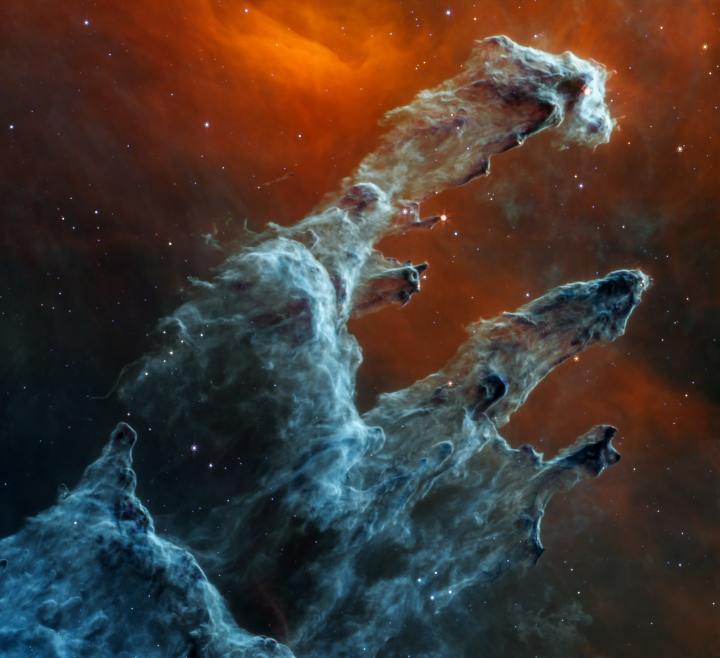Following on from the recent release of a stunning image of the Pillars of Creation, researchers using the James Webb Space Telescope have released another image of the pillars — and it’s a spooky one. Taken in the mid-infrared range using Webb’s Mid-Infrared Instrument (MIRI), the new image shows the enormous clouds of dust that form the famous structure of the pillars.
The previous Webb image of the pillars was taken in the near-infrared range using the Near-Infrared Camera (NIRCam) and showed off the thousands of stars that glow brightly in that range. By looking at the same target in different wavelengths, astronomers can see different features and get a new view of a familiar sight.

The beautiful pillars, which are located 6,500 light-years away in the Eagle Nebula, look rather sinister in this wavelength as James Webb scientists explain: “Why does mid-infrared light set such a somber, chilling mood in Webb’s Mid-Infrared Instrument (MIRI) image? Interstellar dust cloaks the scene. And while mid-infrared light specializes in detailing where dust is, the stars aren’t bright enough at these wavelengths to appear. Instead, these looming, leaden-hued pillars of gas and dust gleam at their edges, hinting at the activity within.”
MIRI is the only Webb instrument that operates in the mid-infrared, which means it has different sensors and different temperature requirements from the other three instruments which operate in the near-infrared. The mid-infrared range is excellent for studying dust, which plays a vital role in the formation of new stars. The pillars are a hotbed of star formation and the dust and gas form into knots that gather material toward them before collapsing under gravity and forming protostars.
However, few stars are visible here as stars don’t give off much light in this wavelength. The few stars which are visible are the younger stars that are still cloaked in dust, which appear in red, and a handful of older stars that have shed their layers and are shown in blue.



